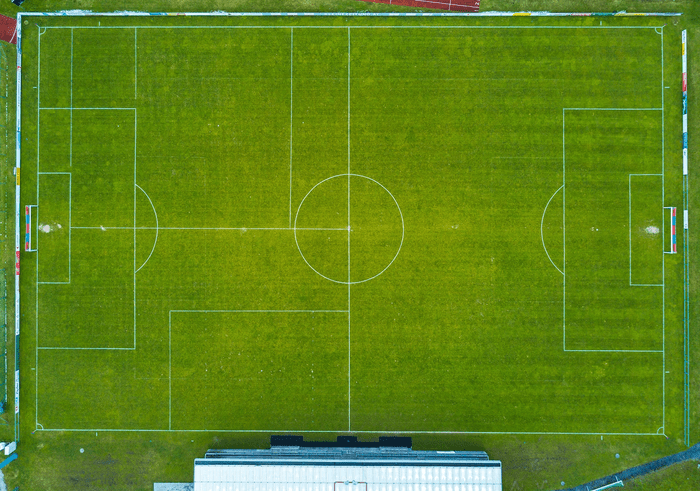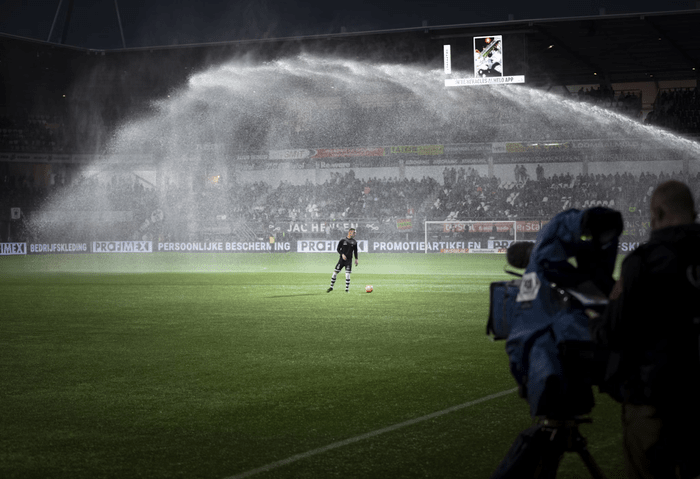New Generation of Grass Technologies for Soccer Pitches
An important factor that has been growing parallel to the sport and has not been given much attention is the grass technology in soccer.
It is true that the quality of the pitch has a bearing on player performance and the results of the games, from as early as the simple turf to the modern-day hybrid systems. This new grass technology is changing the face of the game in ways that are almost unimaginable.
Historical Transformation of Grass Technologies in Sports
Modern technology in the field of grass has advanced a lot in sports that require natural grass fields, which were at one time very hard to come by and very unpredictable compared to the present-day artificial, engineered surfaces.
Early soccer pitches could easily get worn out, boggy, and uneven and were very difficult to play on, especially in bad weather. These conditions not only influenced the quality of play but also raised the chances of getting an injury, which made the call for improved grass technologies necessary.
When websites like MelBet Mongolia explain how to bet on football outcomes, the need for a uniform field is even more pronounced. Modern grass technologies are now a mix of natural and artificial components, which provide toughness and consistency irrespective of the weather.
Such innovations help to keep the pitch in the best possible condition so that both the players and the people placing their bets on the game get a fair game.

Modern Techniques in Soccer Pitch Grass
Modern soccer pitches are equipped with advanced technologies that make them better not only for the game but also for players’ safety. Key advancements include:
- Hybrid grass systems: An integration of natural grass with synthetic fibers to make the whole surface more elastic.
- Subsurface heating: Measures against freezing and maintaining the stability of the pitch in cold climates.
- Automated irrigation systems: Keeping the moisture levels of the grass at the right level to enhance the growth of the grass.
- Advanced soil compositions: Improving drainage and the holding of roots to avoid the formation of irregular surfaces.
These technologies are at the top of the sports field advancements that redefine the football experience from the bottom up.
Advantages of the Advanced Grass Technologies
Modern grass technologies are revolutionizing soccer by delivering playing fields that are not only higher in quality but also in performance. They make it possible to have an even ground even in adverse weather, thus improving the quality of the game and the welfare of the players.
Enhanced Durability and Maintenance
One has to note that the use of hybrid grass systems has significantly improved the durability of soccer pitches. These systems include the blending of natural turf with synthetic elements. These are long-lasting and can easily handle the harshest usage and, therefore, can be used frequently.
Other aspects, such as irrigation, have also improved through methods that control the state of the soil beneath the grass. The combination of this technology makes it possible for the pitches to be in the best possible condition throughout the season without requiring frequent and often expensive repairs.
Performance and Safety Improvements
Grass technologies are not only associated with the appearance of the playfield. They determine players’ performance and protection. The newer designs of the pitches provide a uniform and steady surface, thus minimizing the chances of players getting injured due to the unpredictable nature of traditional surfaces.
These surfaces are uniform, and this contributes to the control of the ball and its speed, which is very important in the modern game of soccer. The emphasis on performance and safety guarantees that every game is played on a good surface that will be beneficial to the players, fans, and the game in general.
Potential Problems in the Introduction of New Technologies
The use of advanced grass technologies specifically for soccer pitches has many challenges. These include:
- High initial costs: It is important to note that the installation of modern systems requires significant capital investments.
- Maintenance complexity: Sophisticated systems call for mastery in maintenance and expertise.
- Resistance to change: Old-school groundsmen and clubs may shun new ideas.
- Environmental concerns: There is always the conflict between using technology and being environmentally conscious.
These challenges must be addressed and avoided for the optimal implementation of modern pitch technology.

Examples of Best Practice
Hybrid grass systems have been introduced at stadiums such as Wembley Stadium and the Santiago Bernabéu and have changed the way these famous pitches behave. At Wembley, the change of the surface to hybrid has significantly reduced injuries, and players are able to give their best in any match, whether it is a cup match or not.
Likewise, the home ground of Real Madrid boasts a perfect playing surface that can be guaranteed to be in pristine condition throughout all weather conditions. This, in turn, improves the safety of the players as well as the quality of the game.
These successful implementations demonstrate that it is possible to adopt innovative grass technologies to enhance the quality of soccer in the largest competitions.
Future Prospects
The development of soccer pitches in the future will involve more advanced grass technologies with better sturdiness, eco-friendliness, and performance. What we can predict is that as these innovations become more available, the level of football as a whole should increase across the world.
The very premise of the game is shifting both literally and symbolically to ensure soccer is on the cutting edge of sports performance.





